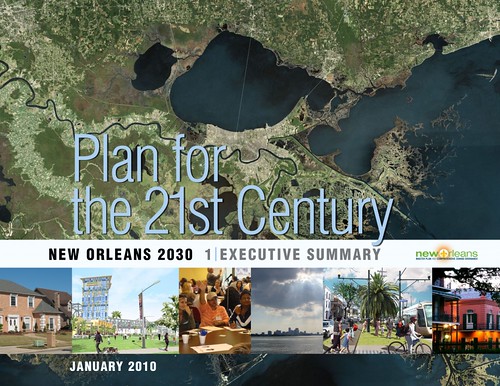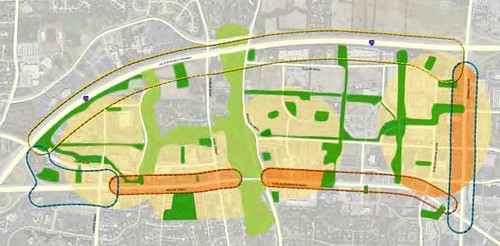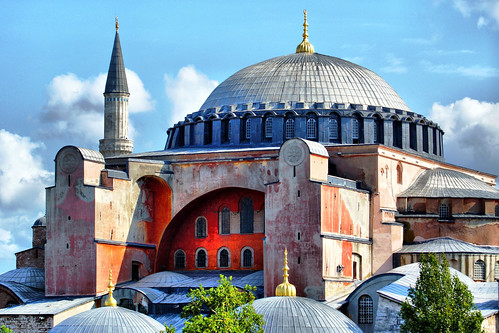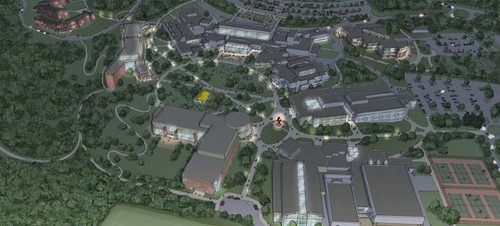David Dixon, leader of 2013's top city planning firm, on what makes cities great

Posted March 12, 2013 at 1:26PM
I believe it was in 2000 that I first met David Dixon, head of the planning practice at Boston’s Goody Clancy architects. We were both part of a forum in Boston and, as I recall, David was a bit late, rushing both from and to other meetings besides ours. (I eventually learned that David’s characteristic rushing about is because he so thoroughly loves his work that he simply cannot say no to more of it.) 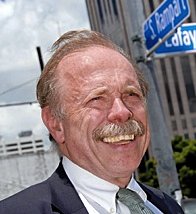 Later that year, we were seated together at dinner, at another forum. Before long, we became great friends and have been working together and sharing life views ever since.
Later that year, we were seated together at dinner, at another forum. Before long, we became great friends and have been working together and sharing life views ever since.
Next month, David and his colleagues at Goody Clancy will be lauded by the American Planning Association as this year’s honorees for “national planning excellence by a planning firm.” It's only the latest in an amazing - and amazingly long - list of awards that David and his colleagues have earned over the years, but also a special one. This makes it an especially good time to ask David some questions about cities, neighborhoods, and sustainability.
David, congratulations on this great honor from APA. I am going to start with a big question: How would you define sustainability?
First, thanks so much for the chance to think about these questions. My quick, too-simple answer is that sustainability is about density, walkability, and transit, the three most basic prerequisites to compact growth, which in turn is the most basic prerequisite to increased environmental sustainability in cities. I oversimplify this because I have many terrific colleagues who are doing a great job of making buildings greener, making alternative energy workable, figuring out how much embedded energy is wasted when we knock down an existing building, and attending to the myriad other components of environmental responsibility. The part I can contribute is making compact growth a welcome goal, and successful.
You actually started me thinking about a more complex answer when you wrote a number of years ago (I can’t remember exactly when or where) that sustainability is not a growing issue but a new paradigm. I love paradigms because they involve developing a world view that works from and for many perspectives. To me, the sustainability paradigm means we must deliver plans that pay attention to the fundamental issues of our age—reducing inter-generational poverty, making communities more economically competitive, preserving culture in neighborhoods facing rapid gentrification, improving public health, creating community in the midst of growing diversity, increasing real estate values that can produce revenues for public needs like parks and schools in an era of constrained public resources, creating densities that support walkability and a wider range of lifestyle choices . . . and doing all of these things in ways that promote greater environmental responsibility.
That’s a big answer to my big question, and one rich with content. Let me ask something similar, but in a different way: what makes a great neighborhood? A great city? Any examples?
I am going to answer this question in two ways. First the fun way: a great neighborhood or city is a place where I just want to be, again and again. The scale of the buildings does not really matter to me; what happens along the street is what matters. Great neighborhoods can be the Upper West Side or Meat Packing District in Manhattan, or the Grachtengordel or Jordaan in Amsterdam.
The real test is, can a five minute walk be a journey of discovery? For me, a great neighborhood has cafés and restaurants that make me hate the fact I always seem to be on a diet; shops that are unique and varied; an animated square that I want to spend time in (ideally with a fountain enabling me to see, touch, and hear water); lots of different people who make me curious; and other qualities such as diversity, interaction, and surprise. New Orleans has neighborhoods that are great because they embody a visible, almost corporeal culture—music, food, “second lines”—that is literally indigenous to that neighborhood (often because many of the residents live in the same house that their great-grandparents once occupied).
When I get to a downtown the criteria are similar but the stakes are higher—and so are the possibilities. I want the same kinds of experiences, but in more intense doses and with added dimensions of history and civic presence. I really love downtowns whose buildings and quirky spaces tell the stories of each chapter of their city’s history, and downtowns whose city hall, main square, or major avenue look and feel like a place of importance and value. My list is not going to surprise anyone: Amsterdam, Asheville (NC), Barcelona, Bologna, Boston, Chicago, New Orleans, New York, Portland, Seattle . . .
My second answer is not so much about architecture and streets but about people. I think some cities are great because they are models for how people representing very different perspectives recognize when change is necessary and make it happen. In Oklahoma City, for example, Democratic and Republican mayors have worked together for years to persuade a fairly conservative electorate to support a series of sales tax hikes for better schools, a downtown art museum, transit, preservation, and other improvements that have brought downtown back to life. In Wichita, Kansas, the mayor, Downtown Development Corporation, Chamber of Commerce and other organizations collaborated to build awareness of why a revitalized downtown matters. The result has been an almost phoenix-like revival that is now well underway, including a downtown housing boom and a “creative economy” that is taking off just as the region’s long-term aircraft manufacturing base is declining.
Those stories remind me that you’ve worked on a wide range of project types, all over the world. Tell us about some favorites.
Well, first, I am lucky. I have never had a dull project. But, this said, the projects I love most are the ones that I think make a difference and begin to implement themselves even before we finish our work—the downtown plan for Wichita is a good example. Others include higher density, mixed-use, walkable downtowns for suburban Dublin, Ohio and Sandy Springs, Georgia; the work we have been doing in New Orleans since Hurricane Katrina—which has really been about building a planning culture that New Orleanians can use to determine for themselves the kind of future they want for their great city; a master plan for Drexel University that basically says that this very dynamic institution can make the streets of Philadelphia its campus; planning to revive the university district around The Ohio State University in Columbus. I will stop here because I am beginning to think of too many projects.
What keeps you humble?
Just how smart literally everyone around me got while I was busy working.
Of all that this award represents, what makes you proudest?
Of course, peer recognition means a lot to me and to everyone here. We were all really excited when we got the news. But I need to start by saluting my colleagues. It is not always easy to have an urban designer (as distinguished from a building designer) as a partner—and my other partners at Goody Clancy (including David Spillane, who helps me lead our urban design practice) have stuck with me and our practice for many years. I am proud that we (architects and preservationists) have built a culture that values a broad, interdisciplinary practice. I have never worked with such a talented group.
Our measure of success is whether our work makes a difference. Was the bar set as high as it could be? Today we enjoy real estate markets and economic trends that enable good planning and urban design to succeed in ways that were beyond our collective reach until recently, because market forces weren’t with us.
There are challenges, though. First, communities have watched decent plans gather dust or not deliver on their promise for decades and they are now, how should I say this nicely, skeptical that a new plan will be any better. Then comes a second challenge. We need to work with communities to develop confidence that many of the things they have fought over a lifetime of activism—density, mixed-income housing, performance-based zoning . . . development itself, in many cases . . . can now be transformed into tools they can use to achieve their goals. If a community does not believe in a plan and support its implementation, it will not make a difference no matter how brilliant or artful it is.
Are there projects you’ve worked on that you wish you could go back and do differently?
Yes, and I am not being glib: all of them. Planning and urban design are iterative processes, which means that when you finish you are still learning and envisioning. I don’t think I have ever finished a project and felt completely good with how far we got. One of the many reasons I like projects with intensive community engagement is that we keep learning and understanding as we go.
Name a favorite piece (or two) of art, music or culture.
The single most amazing cultural experience I can remember was a “jazz funeral” for someone I will always admire, in New Orleans. The music carried us all from joy to grief and back, again and again.
My favorites in art, music, or culture involve experiences that enable me to see, through the mind of the artist who created the work, into another era or another culture. The buildings that I have found most moving, for example, are the Pantheon and the Hagia Sophia. To be looking up at the vast expanse of structures that meant so much to their builders—they were the two largest buildings of their day in the Western world—brought tears to my eyes.
I tend to find a new favorite painting every time I go to a museum. I really love a 1925 print by Morris Louis that lets me look at New York through his eyes decades ago, and a Richard Estes painting that enables me to feel like I am standing on an ordinary Los Angeles street in 1962.
In addition to planning for cities, you’ve been involved in work for campuses and institutions. Do they present special challenges or opportunities?
No and yes. No, because my work has focused on synergies between campuses and communities. The era of the ivory tower is over. Institutions now believe that their future lies with livable, vibrant neighborhoods. Universities can invest in housing, for example, or incentivize faculty and staff to move into existing housing; they can underwrite retail; move students into a neighborhood or move them out; train people for jobs; create better schools; provide health care; and host lots of other services that can improve communities.
However, also yes. Because of distrust, many communities essentially re-enact previous battles with institutions they fear will displace them from their neighborhoods. We have worked for the University of Washington, Ohio State, Drexel, and Emory in recent years and in each case the most difficult task was building sufficient trust to establish a planning partnership. An institution has to plan with a community.
If you were advising a recent graduate who is just beginning to enter the world of placemaking, what would you most want him or her to know?
First, I would say great choice. The right kind of placemaking can make more of a difference to a community today than at any point in my lifetime. But, as Spiderman said, with great power comes great responsibility. Jan Gehl is reputed to have said, “First life, then spaces, then buildings: the other way around never works.” Placemaking is not a fine art; it is a civic art and that means understanding the community—and the opportunities and challenges it faces.
Where else would you like to be right now?
In Carmel with my entire family—which is where I am heading after APA.
This is the second in an occasional series of interviews with leaders who are shaping the field of sustainable communities. My interview with Lloyd Alter, managing editor of the sustainability website TreeHugger, appeared last month.
Related posts:
- What does post-Katrina New Orleans say about cities? About America? (NOLA resilience part 1) (May 11, 2011)
- Emory University's impressive commitment to sustainability (April 4, 2011)
- Remaking a suburb (Dublin, Ohio) for the creative class (October 21, 2010)
- Five unsung heroes for the earth! (April 22, 2009)
- With all political eyes on Ohio, here’s a Buckeye smart growth story (November 3, 2008)
Move your cursor over the images for credit information.

